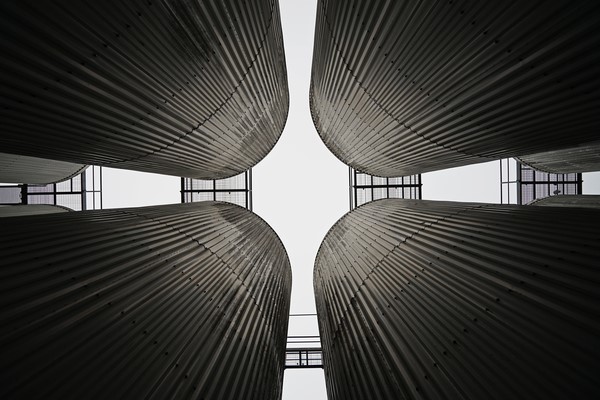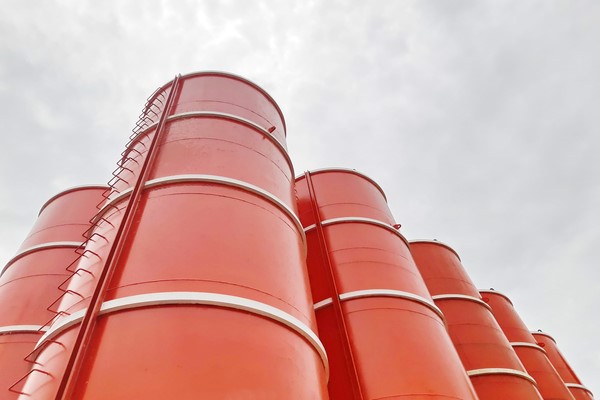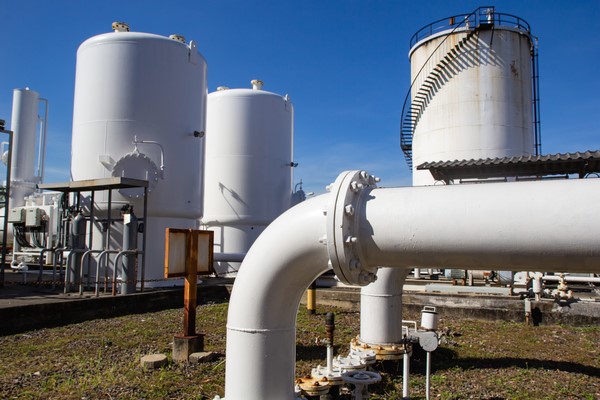Choosing the Right Aboveground Water Storage Tanks for your Need
Temporary water storage tanks for non-potable water are helpful in various industrial operations such as fracking, agriculture, and collection of stormwater runoff. Aboveground water storage tanks are made of carbon steel, stainless steel, or fiberglass. You can also use durable poly tanks made of high-density cross-linked polyethylene.
How do you Choose the Right Aboveground Storage Tank?
Tank Material
- Corrugated Steel – If you want a large tank that’s strong and quick to install, consider a steel body. This is a cost-effective solution where the tank can be quickly bolted or welded together. Steel tanks have a large storage capacity of up to 1 million gallons. They are ideal for irrigation and wastewater treatment applications.
- Fiberglass – Fiberglass is durable yet lightweight. It is also free of corrosion, unlike metals. These tanks are factory-manufactured and can hold up to 50,000 gallons of water. They are ideal for industries that need long-term storage but cannot afford a steel tank. Fiberglass tanks need proper maintenance, or they can become brittle and crack.
- Plastic and Polyethylene – Incredibly lightweight and cost-effective, plastic or poly tanks can store anywhere between 25 and 20,000 gallons of non-potable water. You can quickly install and move them to other locations with basic equipment. These tanks often do not require a concrete foundation. Cross-liked polyethylene tanks offer high strength and minimize leaks. They are great for facilities with a limited budget and small-to-medium size needs.
Tank Capacity
The table below shows a general idea of the number of barrels, the equivalent tank capacity in gallons, and the tank dimensions. For unique capacity requirements, contact us or request a quote.
| Barrels | Gallons | Diameter x Height |
|---|---|---|
| 1,000 | 41,000 | 21′-0″ x 16′-0″ |
| 5,000 | 210,000 | 30′-0″ x 40′-0″ |
| 14,000 | 580,000 | 50′-0″ x 40′-0″ |
| 20,100 | 840,000 | 60′-0″ x 40′-0″ |
| 151,000 | 6,350,000 | 150′-0″ x 48′-0″ |
Table: general idea of the number of barrels, the equivalent tank capacity in gallons
The Specific Gravity Weight (SPG) is the ratio of the density of the substance to the density of the reference liquid. The higher the SPG, the more weight the tank can hold. Aboveground water storage tanks should have an SPG of 1.Specific Gravity Weight
Tank Color
For aboveground water storage, use a dark-colored tank to prevent sunlight from penetrating the body. If sunlight penetrates the polyethylene body, it can aid the growth of algae and bacteria, which are usually harmless but can affect the color and taste of water.
Weather Durability
Corrugated steel tanks are the most durable during changes in weather, followed by polyethylene and fiberglass tanks. This is also what makes steel tanks the most expensive out of the three.
Types of Aboveground Storage Tanks

Bladder Tanks
Also known as “pillow tanks,” bladder tanks are collapsible and are made of durable fabric or rubber, and can be quickly deployed for temporary water storage.
Folding Tanks
Ideal for short-term, non-potable water storage for industrial wastewater, water purification, and pollution control. You can install them in emergency situations on rough terrain.
Steel-Welded Reservoirs
These are massive, shop-built reservoirs that can hold thousands of gallons of water. They are robust, leak-free, and provide adequate water pressure if placed on high ground.
Vertical Tanks
These tanks stand vertically above the ground and are perfect for temporary water storage in refineries, water treatment plants, chemical and manufacturing facilities, construction sites, and environmental facilities. They could be made of plastic, polyethylene, fiberglass, or steel.
Horizontal Tanks
These portable water storage tanks lie horizontally on the ground and may or may not require a foundation. Horizontal tanks are available in polyethylene, with high-visibility railings, guard rail assembly on the roof, and a steel casing to house the tank.
Which Regulations Apply to ASTs?
All aboveground Storage Tanks (ASTs), including those that store non-potable water, must meet regulations under the 40 CFR 112 of the US EPA. The EPA classifies them as bulk storage containers.
Bulk storage containers are regulated under diverse federal acts and requirements enforced by state and local government authorities. But there is no uniform national federal program by the government that regulates aboveground water storage tanks.
For example, aboveground tanks in Minnesota are subject to the MCPA’s rules for designing and operating ASTs, which also covers piping, valves, containment areas, pumping system, and loading areas. Check with local authorities for state or county government guidelines. You can review Minnesota’s administrative rules and definitions here.
Uses of Aboveground Water Storage Tanks
Industrial and residential areas use aboveground water storage tanks for consumption, domestic (non-potable), and industrial applications.

Industrial Water Storage
In areas where groundwater level is low or the quality is poor, people use aboveground water storage tanks. You can use non-potable water for emergencies such as fire suppression where you can feed this water into the sprinklers of fire protection systems.
Rainwater Harvesting
Heavy rainwater runoff can cause soil erosion damaging the plants and harming the wildlife. You can divert the rainwater flow from rooftops to aboveground storage tanks and use it for irrigation. You can run the collected rainwater through a purification system and make it potable.
Graywater Storage
Graywater is not fit for drinking, as it is produced as a result of other domestic or industrial operations such as stormwater runoff, domestic wastewater, roof runoff, and HVAC condensation.
Farm Water Storage
Instead of using scarce freshwater, use non-potable water to irrigate the fields. Storing water on a farm in aboveground storage tanks can give you year-round supply of water even in the dry months. You can also use this water to feed cattle or control fire outbreaks. It also allows for more judicious use of water because it prevents flooding.
Sustainable Applications
Non-potable water stored in aboveground storage tanks can help meet the sustainability needs of entire facilities.
For instance, Stanford University uses non-potable water to irrigate its golf course, agricultural leasehold, athletic fields, and campus landscaping. This helps save almost one million gallons of potable water a day. Stanford uses this water for consumption in domestic, research and academic applications, and is beneficial for the environment.
Advantages of Aboveground Water Storage Tanks
Cost-Effective
Building water storage tanks above ground is cheaper because you don’t have to dig and build reinforcements that are necessary for underground tanks.
Easy to Maintain
Because the tank is fully visible, you can immediately troubleshoot and make repairs. It takes less time and effort and makes the process less costly.
Aesthetics
You can alter the external appearance of an aboveground water storage tank to make it blend with or even enhance its surroundings. Aboveground tanks can serve other purposes as well. For example, a business may want to display them as part of its sustainability practices.
Why Choose Ironclad Environmental Solutions for Temporary Water Storage Tank Solutions?
- Rapid response – We have rapid response times with 24/7/365 availability. We do pickups and deliveries on weekends also. We pick up the phone on the first ring and respond to your emails and texts faster than the competition.
- Expert advice – Our team has years of industry experience and can advise you on the best solution for your specific need.
- Safety – Our products and operations strictly follow OSHA guidelines and DOT regulations.
- Versatile industry solutions – Our equipment can support industrial, construction, manufacturing, agriculture, environmental remediation, or petrochemical projects.
- Seamless experience – From your first call to delivery, our dedicated staff helps you every step of the way. We help you select the right tanks and equipment at budget-friendly prices.
- Varied assets – Ironclad Environmental can provide a solution to your specific requirements and supply specialty tanks to meet your needs.

FAQs
Are Aboveground Storage Tanks Regulated?
Yes, all aboveground tanks, irrespective of their contents, should meet regulations under the 40 CFR 112 of the US EPA, which classifies them as bulk storage containers.
What are the Containment Solutions for Aboveground Tanks?
You can use a variety of containment measures, including:
- Earthen dikes
- Steel catch pans
- Double-walled tanks
- Concrete encasing
- Concrete or portable berms
- Remote impounding
- Raised door sills
- Sealed room enclosure
What Surface Do You Need to Place a Vertical Tank?
You can place vertical poly tanks directly on level ground or inside a temporary plastic berm. Larger tanks that hold more than 2,000-gallons such as our 21,000 gallon steel tanks should have a prepared stable, level base capable of supporting 200,000 lbs or more of combined weight of the tank and contents. You can also use other materials such as tightly packed sand, pea gravel, or equipment mats.
The base should provide uniform support in cold and hot climates, frost, thaw, erosion, snow, and other environmental disturbances.
How Do You Inspect an Aboveground Storage Tank (AST)?
Regular inspection of ASTs is important to prevent any damage or leaks. One must keep the following parameters in mind:
- Containment – Inspect drainage pipes, valves, and containment areas every month under regulations laid by NEPA.
- Base – Check for any cracks on the base and on the wing walls.
- Shell – The shell should be free of any cracks, dents, bulging, and corrosion.
- Electrical equipment – Ensure that the control boxes and grounding lines are functioning properly.
- External coating – Make sure that the external coating can endure harsh weather, especially direct sunlight.
- Roof – There shouldn’t be any stagnant water on the roof, and it should be free of any dents and cracks.
- Insulation – There should be no moisture, mold, or impairment in the tank’s insulation.
- Internal walls – There should be no bacterial contamination, erosion, or corrosion on the tank’s interior walls.
- Level gauge – The level gauge should work fine to prevent under or over-loading of the tank.